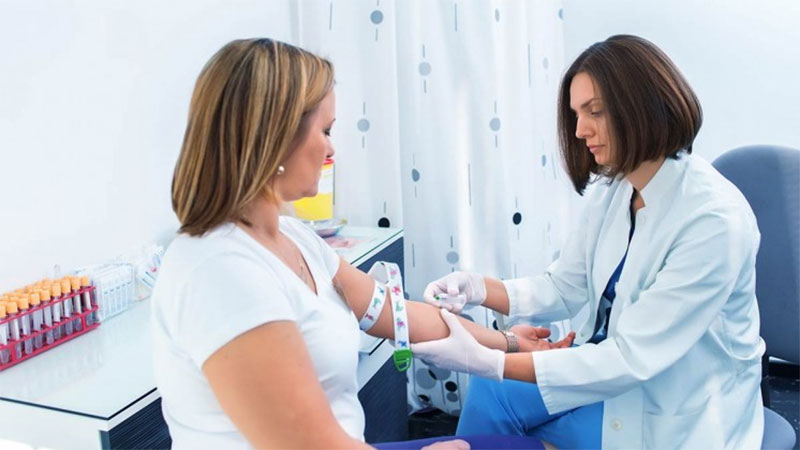What You Need To Know About Cancer Diagnosis
If you and your doctor suspect you might have cancer, the only way to confirm it is through diagnostic testing. There are a number of diagnostic methods that might be used. These are laboratory tests, a biopsy of a tumor, including an endoscopy procedure, imaging tests, and genetic testing. Although not all of these tests will be done, you may need two or three of them to confirm or refute a cancer diagnosis. We examine each of these techniques to give you the knowledge to be prepared for testing.

Laboratory Tests
Diagnostic lab tests for cancer include urinalysis, blood tests, tissue tests, and tumor marker tests. Urinalysis can detect bladder, prostate, cervical, and kidney cancers. Traces of myeloma protein would be indicative of possible multiple myeloma but further tests would be needed to confirm a diagnosis.
Typical blood tests to diagnose cancer are a full blood count, tests for proteins, and tumor markers. Some cancers produce certain proteins that when found in the blood show the presence of that cancer. Multiple myeloma proteins can be detected in the blood or urine. Blood cancers like multiple myeloma, leukemia, Hodgkin lymphoma, and Non-Hodgkin lymphoma are among those that blood tests are run for.
In some cancers, such as the blood cancers mentioned above, there will be abnormally high white blood cells found in a complete blood count. On its own, this does not mean that you have cancer. There are other conditions, such as infections that can increase the number of white blood cells in the blood.
Cancerous cells can produce chemical substances in the body called tumor markers, which can be picked up in a blood test. Sometimes your healthy cells also produce these substances as a reaction to cancer cells.
Tumor Biopsies
Tissue test material is obtained from tumor biopsies and examined in the lab.
Biopsies can determine the malignancy of a tumor or if it is benign (non-cancerous). A biopsy procedure can be done with a local anesthetic, although not all biopsies require sedation. Your doctor can perform some biopsies, but others have to be completed at a hospital. Whenever a lump is present, a biopsy will most likely be performed. A sample of the tumor is removed and will be examined under a microscope. Other lab tests may be run on the tissue sample as well.
There are several ways to conduct a biopsy. The doctor can use a needle to remove fluids or a tissue sample. A needle biopsy is indicated to obtain a sample of bone marrow, breast tissue, liver, or prostate material.
An endoscope is a tube that is inserted into the mouth or anus to look for abnormal tissue. If this is found, a small section will be withdrawn. Some healthy tissue around it is also removed and both will be examined. Endoscopy is used to examine the rectum, colon, lungs, bronchi, and trachea.
Surgery is used to remove cells to check for some abnormalities. This may be incisional or excisional. In the former, only abnormal cells are excised, while in the latter, healthy tissues are also removed that surround the tumor or growth of cells.
Imaging Tests
Imaging tests use different forms of energy, like magnetic fields or x-rays to form images of your body inside, such as your organs or bones. These diagnostic tests include MRI (using radio waves and a magnet), CT scan (x-rays with a computer), ultrasound (sound waves), and normal x-rays. Additionally, radionuclide scans (with radioactive material) are used to perform bone scans and PET scans.
Some of these imaging tests make use of a dye that is injected or swallowed to highlight parts of the body. For example, just prior to taking a radionuclide scan, you will be placed on an IV drip of radioactive material. These radioactive particles produce particles called tracers that interact with substances in the body, allowing malignancies to be revealed.
These tests can be costly, depending on what your insurance covers. For example, you might be wondering how much is a CT scan without insurance? Ezra breaks down the cost into technical, professional, and overhead fees. Ezra offers competitive, transparent pricing for exceptional imaging services with an option of monthly repayments.
Genetic Testing
Genetic (or DNA) testing searches for tiny bits of genetic material that are discarded from cancerous cells. All cells, both cancerous and healthy, lose these pieces as they grow and die. These bits of genetic material enter the bloodstream for the body to excrete.
Tests of DNA material discarded in this way can be used to establish the presence of cancerous cells when traces of them appear in the blood.
The outcomes of these various tests will help your doctor confirm a diagnosis of cancer and choose the best treatment options. This will be supplemented with a thorough physical examination.

